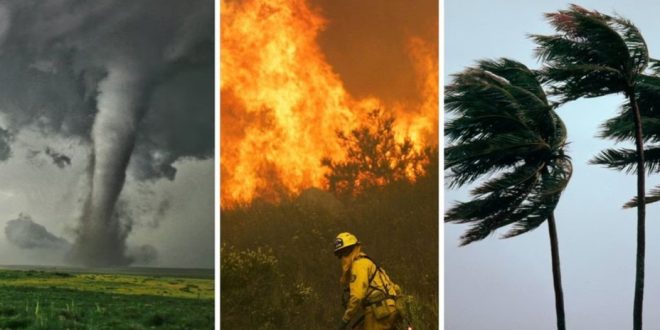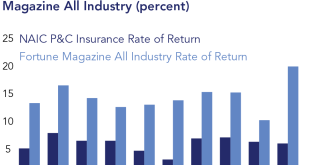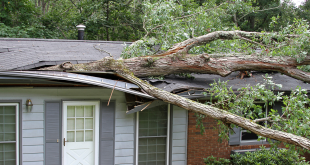Climate change is no longer a distant threat; it’s reshaping our lives in tangible ways, perhaps most acutely in the realm of homeownership. As extreme weather events become more frequent and intense, insurance companies are reassessing their risk exposure, leading to skyrocketing premiums and, in some cases, outright policy cancellations. This dramatic shift is forcing homeowners to confront the reality of climate risk and, for some, to make difficult decisions about where they choose to live. It’s a bit scary, to be honest, especially when you think about your own home.
The Rising Tide of Insurance Premiums
Have you noticed your home insurance bill creeping up lately? It’s not just inflation; a big part of it is climate change. Insurers are having to face the facts: extreme weather is becoming, well, more extreme. Think about those massive hurricanes, wildfires, and floods – they’re not just news stories anymore, they’re financial liabilities.
Understanding Climate Risk’s Impact on Insurance
Basically, climate risk refers to the potential for damage and losses caused by weather-related events. For insurers, this translates directly into payouts. The more they pay out, the higher the premiums go. They need to stay afloat somehow, right? It’s a tough situation because, let’s be real, who wants to pay more for insurance?
Areas Most Affected by Premium Increases
Coastal regions are definitely feeling the heat, both literally and figuratively. Places prone to hurricanes, like Florida and the Gulf Coast, are seeing some of the steepest increases. But it’s not just coastal areas. Wildfire-prone areas in California and the Mountain West are also getting hit hard. And honestly, even places you wouldn’t expect are seeing changes as insurers recalibrate their risk models. It’s like, nowhere is truly safe anymore, is it?
The Role of Reinsurance in the Crisis
Reinsurance is basically insurance for insurance companies. When major catastrophes hit, reinsurance firms step in to help cover the losses. But, guess what? Reinsurance rates are also going up, which, of course, trickles down to you, the homeowner. It’s a bit like a domino effect, and you’re standing right in the path of the last one. Makes you wonder if there’s any escape, doesn’t it?
Policy Cancellations: A Growing Concern
Beyond just higher premiums, some homeowners are facing an even bigger problem: policy cancellations. Yep, insurers are outright refusing to cover certain properties. It sounds harsh, but their reasoning is pretty straightforward: the risk is simply too high.
Defining “Uninsurable” Properties
What makes a property “uninsurable”? Typically, it’s properties located in areas with a high risk of flooding, wildfires, or coastal erosion. If your home has a history of repeated claims, that can also make it difficult to insure. It’s a grim situation, like being told your house is simply too risky to protect. Imagine hearing that. Just awful.
The Ripple Effect on Property Values
If your home is deemed uninsurable, guess what happens to its value? It plummets. Who wants to buy a house they can’t insure? This can create a vicious cycle, where homeowners are trapped in properties they can’t sell or afford to maintain. It’s kind of a financial nightmare, and it’s all tied to climate risk.
Navigating the Cancellation Process
If you receive a cancellation notice, don’t panic. First, find out exactly why your policy is being canceled. Then, explore your options. Contact other insurance companies, look into state-sponsored insurance programs, and consider investing in mitigation measures to reduce your home’s risk. It’s going to be a fight, but sometimes fighting is all you can do, right?
Forced Migration: Relocating Due to Climate Risk
For some, the writing is on the wall. The risks are too high, the costs are too great, and the only viable option is to move. We’re starting to see the beginnings of climate-driven migration, where people are forced to relocate due to the increasing impacts of climate change. It sounds extreme, I know, but it’s happening.
The Factors Driving Relocation Decisions
The decision to relocate isn’t easy. It’s driven by a combination of factors, including rising insurance costs, repeated property damage, and concerns about safety. People are weighing the financial and emotional costs of staying versus the upheaval of moving. It’s a wrenching choice to have to make.
Challenges Faced by Climate Refugees
Moving because of climate change comes with its own set of challenges. Finding affordable housing in safer areas, dealing with the emotional toll of displacement, and rebuilding a life in a new community are all significant hurdles. It’s not just about packing up your belongings; it’s about rebuilding your entire existence.
Government and Community Support for Relocation
Ideally, governments and communities should be providing support for those forced to relocate due to climate change. This could include financial assistance, relocation services, and job training programs. But, let’s be honest, we’re not quite there yet. There’s a lot of work to be done to ensure that climate refugees are treated with dignity and have the resources they need to start over. It’s not something you see on TV often enough.
Alternative Insurance Options and Mitigation Strategies
Okay, so what can you actually do? While the situation sounds bleak, there are some alternative insurance options and mitigation strategies to explore. It’s all about being proactive and finding solutions that work for you.
State-Sponsored Insurance Programs
In some states, particularly those prone to hurricanes or other natural disasters, there are state-sponsored insurance programs designed to provide coverage when private insurers won’t. These programs can be a lifeline for homeowners who are struggling to find affordable insurance. It’s worth checking to see if your state offers something like this. You never know!
Investing in Home Hardening and Mitigation
Another option is to invest in home hardening and mitigation measures. This could include things like reinforcing your roof, installing hurricane shutters, or creating a defensible space around your home to protect it from wildfires. These investments can not only reduce your risk but also make your property more attractive to insurers. It’s a bit like showing the insurance company you’re serious about protecting your investment.
Community-Based Resilience Initiatives
Sometimes, the best solutions are community-based. Neighborhoods can come together to implement resilience initiatives, such as building community gardens, creating evacuation plans, and sharing resources. By working together, communities can become more resilient to the impacts of climate change. It’s kind of a “we’re all in this together” approach.
The Future of Homeownership in a Changing Climate
What does the future hold for homeownership in a world increasingly shaped by climate change? It’s a big question, and the answer is far from certain. But one thing is clear: we need to adapt.
Long-Term Projections and Predictions
Long-term projections suggest that climate risk will only continue to increase in the coming years. This means that insurance premiums will likely keep rising, and more properties will become uninsurable. It’s a sobering thought, but it’s important to be aware of the potential challenges ahead. Better to be prepared than caught off guard, right?
The Role of Policy and Regulation
Policy and regulation will play a crucial role in shaping the future of homeownership in a changing climate. Governments need to implement policies that encourage climate-resilient development, support mitigation efforts, and provide assistance to those who are displaced by climate change. It’s about creating a system that protects homeowners and promotes sustainability. Easier said than done, of course.
Adapting to the New Reality
Ultimately, adapting to the new reality of climate risk will require a shift in mindset. We need to be more aware of the risks we face, more proactive in taking steps to mitigate those risks, and more willing to consider alternative living arrangements. It’s not going to be easy, but it’s necessary.
It’s a lot to take in, I know. The intersection of climate change and homeownership is complex and, frankly, a bit daunting. But hopefully, this gives you a better understanding of the challenges and some potential solutions. Maybe start by checking your insurance policy or looking into local resilience initiatives. Every little bit helps, and who knows, maybe we can weather this storm together. What do you think? Share your thoughts!
 seeme
seeme




